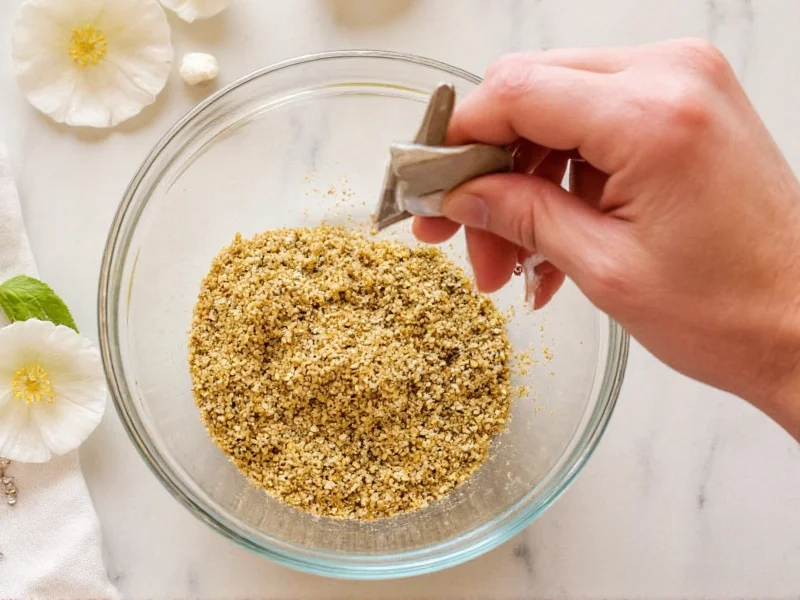Quinoa's naturally mild, slightly nutty flavor makes it incredibly versatile but often leaves eaters wondering how to transform this nutritious grain into something truly delicious. Unlike stronger-flavored grains, quinoa readily absorbs seasonings, making proper seasoning technique essential for creating satisfying dishes. Understanding the science behind flavor pairing with quinoa can transform your meals from bland to extraordinary.
The Science of Seasoning Quinoa Properly
Quinoa contains saponins, natural compounds that give unprocessed quinoa a bitter taste. While most packaged quinoa is pre-rinsed, understanding how to counteract any residual bitterness while enhancing quinoa's natural nuttiness is key. The starch structure of quinoa differs from rice or couscous, requiring specific seasoning approaches at different cooking stages for maximum flavor absorption.
Essential Seasoning Principles for Perfectly Flavored Quinoa
Successful quinoa seasoning follows three fundamental principles: layering flavors, balancing taste elements, and timing additions correctly. Unlike pasta that's seasoned only in the cooking water, quinoa benefits from seasoning at multiple stages. The porous nature of cooked quinoa grains allows them to absorb flavors more effectively when seasonings are added both during and after cooking.
Best Seasoning Categories for Quinoa
Understanding which seasoning categories complement quinoa's flavor profile helps create balanced dishes. The following table outlines proven seasoning combinations:
| Seasoning Category | Specific Recommendations | Best Pairing Applications |
|---|---|---|
| Salt & Acid Foundations | Sea salt, lemon/lime juice, apple cider vinegar, sumac | Essential base for all quinoa dishes; add salt to cooking water, acid after cooking |
| Warm Spices | Cumin, coriander, smoked paprika, turmeric, cinnamon (small amounts) | Mexican, Middle Eastern, or Indian-inspired quinoa bowls |
| Fresh Herbs | Cilantro, parsley, dill, mint, basil | Add after cooking; ideal for salads and light dishes |
| Umami Boosters | Nutritional yeast, soy sauce, miso paste, mushroom powder | Vegan "cheesy" quinoa, grain bowls, savory breakfast quinoa |
| Aromatic Alliums | Minced garlic, shallots, green onions, chives | Sauté before adding quinoa for deeper flavor foundation |
When to Add Seasonings for Maximum Flavor Impact
The timing of seasoning additions dramatically affects quinoa's final flavor. For optimal results:
- During cooking: Add salt (1 teaspoon per cup of dry quinoa) and hardy spices like cumin or coriander to the cooking liquid. This allows flavors to penetrate the grains as they absorb liquid.
- During resting: After cooking, let quinoa sit covered for 5 minutes with a bay leaf or garlic clove to infuse subtle flavors.
- After cooking: Fold in fresh herbs, citrus juice, delicate spices, and oils just before serving to preserve their bright flavors.
This multi-stage seasoning approach creates depth that single-stage seasoning cannot achieve, addressing the common problem of bland quinoa that plagues many home cooks.
Signature Quinoa Seasoning Blends to Try
Instead of seasoning haphazardly, try these balanced blends that solve the "what to add to quinoa" dilemma:
Mediterranean Herb Blend
Combine 2 tablespoons olive oil, 1 tablespoon lemon juice, 1 teaspoon dried oregano, 1 teaspoon dried thyme, 2 minced garlic cloves, and 2 tablespoons chopped fresh parsley. Toss with 3 cups cooked quinoa. Perfect for quinoa salads with cucumbers, tomatoes, and feta.
Smoky Southwest Blend
Mix 1 tablespoon olive oil, 1 teaspoon smoked paprika, 1 teaspoon cumin, 1½ teaspoons chili powder, 1 minced garlic clove, and juice of 1 lime. Fold into 3 cups warm quinoa. Ideal for taco bowls or as a side with grilled chicken.
Asian-Inspired Umami Blend
Whisk together 1 tablespoon toasted sesame oil, 2 tablespoons tamari or soy sauce, 1 tablespoon rice vinegar, 1 teaspoon grated ginger, and 1 teaspoon honey or maple syrup. Toss with 3 cups cooked quinoa and 2 tablespoons nutritional yeast for a vegan "cheesy" effect.
Avoiding Common Quinoa Seasoning Mistakes
Even with the best intentions, home cooks often make these seasoning errors with quinoa:
- Underseasoning: Quinoa requires more salt than rice due to its protein structure. Always season cooking water adequately.
- Adding acid too early: Citrus and vinegar break down when cooked too long, becoming bitter. Add after cooking.
- Overpowering delicate quinoa: Avoid heavy spices that mask quinoa's subtle flavor. Balance is key for perfect quinoa seasoning every time.
- Not tasting as you go: Quinoa's flavor absorption varies by batch. Adjust seasonings incrementally for consistent results.
Flavor Pairing Guide for Different Quinoa Dishes
Understanding which seasonings complement specific quinoa applications takes your cooking to the next level:
- Breakfast quinoa: Cinnamon, cardamom, vanilla, and a touch of maple syrup create a satisfying porridge alternative.
- Quinoa salads: Bright acid-forward dressings with Dijon mustard base enhance cold quinoa dishes.
- Quinoa stuffing: Sage, thyme, and poultry seasoning transform quinoa into perfect holiday stuffing.
- Quinoa bowls: Layer seasonings in both the quinoa and sauce components for complex flavor profiles.
Professional chefs consistently emphasize that properly seasoned quinoa serves as an excellent base for countless dishes when approached with thoughtful flavor pairing. The key is understanding how different seasonings interact with quinoa's unique texture and mild flavor profile.











 浙公网安备
33010002000092号
浙公网安备
33010002000092号 浙B2-20120091-4
浙B2-20120091-4